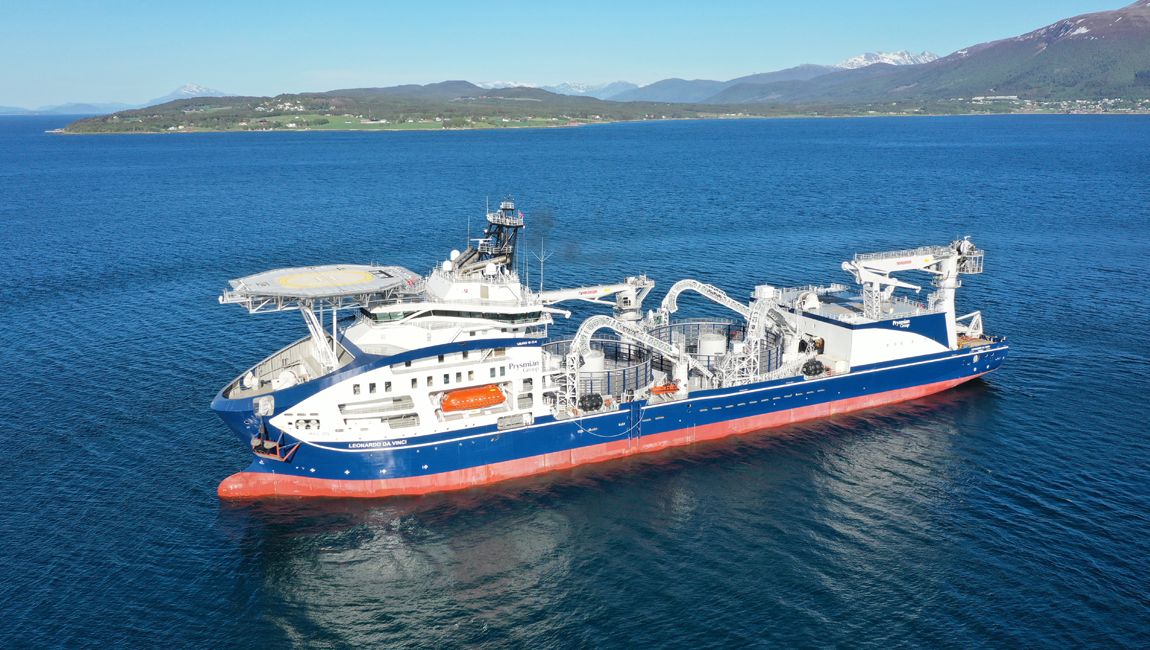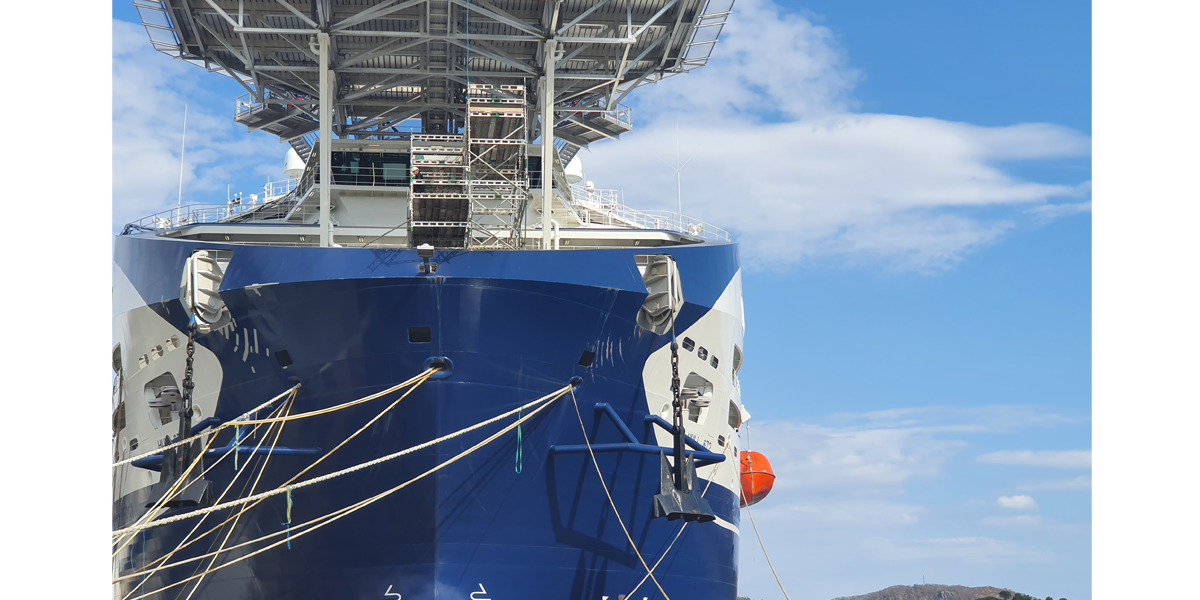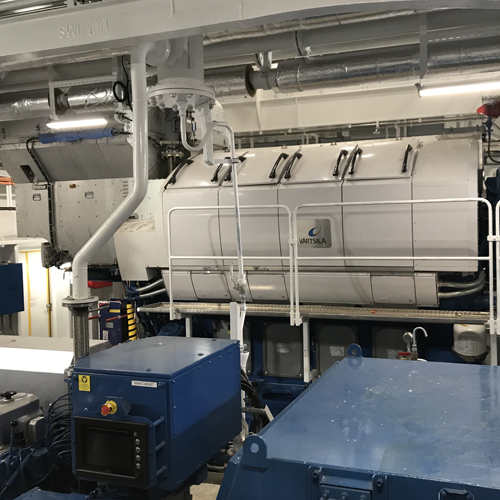Leonardo da Vinci finally sets sail

Last February, the main engines of Leonardo da Vinci, installed in Tulcea, Romania, were turned on for the first time in Vard’s shipyard in Brattvåg, Norway. After undergoing the last outfitting phases, mostly completed, in May, the record-breaking vessel is finally ready to set a new milestone: leave the shipyard for its first trip open sea, powered by its own engines.
Once ready, Leonardo da Vinci will lead Prysmian Group towards its goal to enable the energy transition to a carbon-neutral world by 2050. Let’s have a close look at the steps that will take the Leonardo da Vinci offshore.
First phase of sea trials
Leonardo da Vinci will undergo sea trials for approximately two weeks and the vessel will run three turns of tests.
After draught readings, the first phase of sea trials can start with boarding and general mustering in Mess room.
Various tunings are performed, to get ready for technical sea trials: tuning of main propulsion and drives, tuning of bow thrusters and drives, battery system, fine tuning of main engines, freshwater production plant commissioning, autopilot tuning and DP tuning.
Second phase of sea trials: from anchor windlass test to DP tuning and THD measurements
The second phase of sea trials is the longest. It starts with the anchor windlass test: during this test, the anchor must be dropped at a water depth of minimum 90 m testing also the brakes system.
After that, it is time to test the emergency lowering of SB lifeboat, during which the lifeboat is lowered to the waterline at zero vessel speed. The intention with this test is to demonstrate the emergency lowering of Lifeboat SB according to emergency procedure of Lifeboat davit.
Vessel trial speed is another important step of sea trials: this test must be carried out at trial draught and with adequate number of main generator engines running. Measurements are done through navigational GPS.
Then, it’s the time to test main propulsion systems, steering gear, maneuver, power management system, navigation and communication equipment, autopilot, current profiler, thermal imaging, drives, energy storage system, unattended machinery spaces, main propulsion, noise and vibration & other technical tests.

The final stages: bollard pull sea trials
In the end, final tests and measurements are carried out on winches, bollard pull, 100 Tons offshore crane, A-frame and towing/lifting winch, which will support burial tools used for operations.
Onboard
The majority of the outfitting phases is now completed: among others, the anchors, the Azipod propulsion, engine rooms, tunnel and retractable thrusters, 7,000t and 10,000t carousels, pickup arms, control cabins, capstan, ancillary equipment were completely installed.
Galley, provision store outfitting and cabin furniture installation are almost completed.
Heading to mid-2021, Leonardo da Vinci is almost ready to be fully operational, despite the ongoing Covid-19 pandemic. The vessel will boost Prysmian Group’s project versatility thanks to advanced features, with an eye to sustainability thanks to specifically designed engine and propulsion set up.







